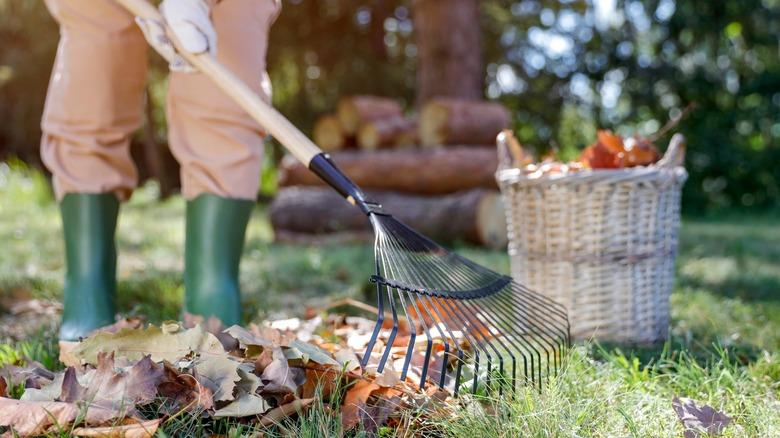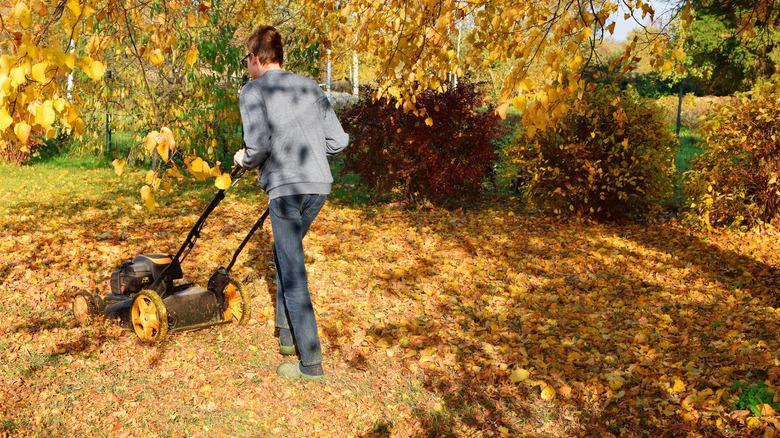You Might Want To Reconsider Using Fallen Leaves As Mulch
We may receive a commission on purchases made from links.
Is using leaves from your yard as mulch dangerous to your plants? After all, leaf mulch can enrich your soil, help retain moisture, impede unwanted weed growth, and keep bags of leaves out of landfills. Leaf mulch is also cheap because the leaves are literally laying around your yard — no trips to the garden store needed. You won't have to worry about how much landscape mulch to buy. But there are indeed some dangers when using leaves as mulch that you need to avoid, and you may want to reconsider altogether.
Leaves layered too deeply will not decompose well. They are high in carbon and need an additional nitrogen source (like grass clippings) to decompose fully. That decomposition must happen to enrich your soil. Thick layers of leaves can cause rot and allow harmful fungus to grow by restricting air and water from getting to your soil. Small varmints like mice and voles love to tunnel under a thick mat of leaves and become pests if they can find such a place to call home. Finally, and perhaps the most difficult to determine, is that you may be broadcasting harm by using leaves from a tree with disease problems or insect issues. While this may sound daunting, the good news is that these dangers can easily be avoided by properly preparing the leaves and applying them judiciously.
Shred the leaves before using them as mulch
The first step in avoiding leaf mulch problems is to shred the leaves. The best way to shred leaves is with a dedicated leaf shredder. There are various types of shredders: standalone, push models, those you can pull behind a lawn tractor, and even options like the Worx yard vacuum. All of them chop the leaves up into little pieces. The smaller pieces will not pack together as easily, and most importantly, they will decompose more quickly.
If you don't have a leaf shredder, you can use your lawn mower as a mulching mower to shred them. Rake the leaves into a pile and mow through them with several passes. When you get the leave shredded into bits, mix them with lawn clippings to add a source of nitrogen to quicken the decomposition process along. Then, let the mixture decompose before applying. If a tree is infected with a disease or pests, don't collect those leaves ... you could spread those problems into the rest of your yard and garden.
When applying the mulch to your garden or around trees and shrubbery, don't use too much. If you apply mulch too thickly, even if it's shredded and mixed with nitrogen-rich sources, it can create pest, fungal, or nutrient issues. A 2- to 4-inch deep layer will suffice. Keep the mulch about 1 inch away from the trunk of the tree, plant, or shrub, as mulching right up to the plant's stem may kill it. Using these simple steps of proper preparation and application, leaf mulch can still be one of the absolute best ways to enhance your garden and keep your trees and shrubs healthy.

